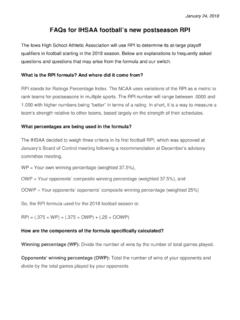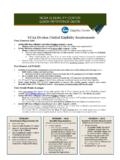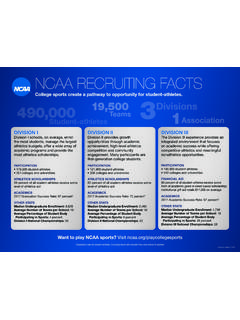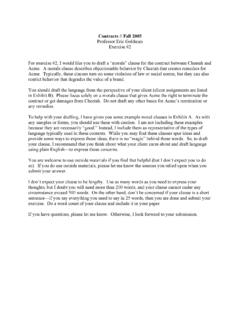Transcription of Concussion Symptom Inventory - Snell Foundation
1 Concussion Symptom Inventory (CSI): An Empirically-Derived Scale for Monitoring Resolution of Symptoms Following Sport-Related Concussion Christopher Randolph, PhD 1. William B. Barr, PhD 2. Michael McCrea, PhD 3,4. Scott Millis, PhD 5. Kevin Guskew icz, PhD, ATC6. Thomas A. Hammeke, PhD 4. James P. Kelly, MD 7. 1. Department of Neurology, Loyola University Medical Center, Chicago (Maywood), IL. 2. Departments of Neurology and Psychiatry, New York University School of Medicine, New York, NY. 3. Neuroscience Center, Waukesha Memorial Hospital, Waukesha, WI. 4. Department of Neurology, Medical College of Wisconsin, Milwaukee, WI. 5. Department of Physical Medicine and Rehabilitation, Wayne State University School of Medicine, Detroit, MI. 6. Departments of Exercise and Sport Science and Orthopedics, University of North Carolina at Chapel Hill, Chapel Hill, NC. 7. Department of Neurosurgery, University of Colorado School of Medicine, Denver, CO.
2 Correspondence to: Christopher Randolph, PhD, 1 East Erie, Suite 355, Chicago, IL 60611. tel: (312)-863-3033;. fax (312)-573-0900; email Acknowledgements: This project was supported in part by funding from the ncaa , the National Operating Committee on Standards for Athletic Equipment (NOCSAE), Center for Disease Control's National Center for Injury Prevention and Control (NPIPC), National Academy of Neuropsychology, Waukesha Memorial Hospital Foundation , National Federation of State High School Associations, NFL Charities, Green Bay Packer Foundation , Milwaukee Bucks, Herbert H. Kohl Charities, Waukesha Service Club, and the Medical College of Wisconsin General Clinical Research Center (M01-RR00058 from the National Institutes of Health). The authors would also like to acknowledge the invaluable assistance of Amy Mathews, MSW, and Stephen Marshall, PhD, in data management. Objective: Self-report post- Concussion Symptom scales have been used for many years as a key method of monitoring recovery from sport-related Concussion , to assist in medical management and return-to-play decision- making.
3 To date, however, item selection and scaling metrics for these instruments have been based solely upon clinical judgment, and no one scale has been identified as the gold standard . The goal of this project was to use a statistical approach to explore item selection and scaling from a large dataset of existing scales, in order to empirically-derive the most efficient and appropriate scale possible for this application. Setting: Data were collected as part of three separate studies of sport-related Concussion , involving 129 high schools and 29 colleges. Participants: Baseline data from detailed standardized Symptom checklists including a total of 27 Symptom variables were collected from a total of 16,350 athletes, including 13,879 male and 2,471 female participants in football, soccer, lacrosse, and ice hockey. Follow -up data were obtained from 641 athletes who subsequently incurred a Concussion . Main Outcome Meas urements: Symptom checklists were administered at baseline (preseason), immediately post- Concussion , post-game, and at 1, 3, 5, and 7 days post-injury.
4 Results: Effect size and Rasch analyses resulted in retention of only 12 of the 27 variables, and in a change from Likert to dichotomous scaling. Receiver-operating characteristic (ROC) analyses were used to confirm that the reduction to dichotomous scaling did not reduce sensitivity or specificity. The newly-derived Concussion Symptom Inventory (CSI) is presented. Conclusions: Using an empirical approach to eliminate items that proved to be insensitive to Concussion and to reduce the score range from 7 to 2 resulted in a scale that is efficient and rapidly-administered, without sacrificing sensitivity or specificity. The CSI is recommended as a core measure for monitoring recovery from sport-related Concussion . Introduction The medical management of sport-related Concussion has suffered from a dearth of empirical data from prospective controlled outcome studies. This has led to a burgeoning number of conflicting injury classification systems and return-to-play guidelines.
5 Although there are now over a dozen different proposed sets of guidelines, it has been recognized that few, if any, of these are evidence-based, and none has been universally accepted. 1, 2 The various guidelines are all in agreement, however, that a player should be Symptom -free before returning to play. 3-7. Although the rationale for this recommendation also remains poorly substantiated to date, the primary concern is that players may be at an elevated risk of repeat Concussion during the symptomatic post-concussive period. There is some evidence that such a period of vulnerability may exist, and that recovery following a second Concussion may be somewhat more prolonged 8. A second concern is the risk of second-impact syndrome, or brain swelling thought to be secondary to cerebrovascular congestion. 9 This can be a life-threatening condition, but it is extremely rare and the causative mechanism remains unclear (and may not require a second impact).
6 10, 11. There is a general consensus, however, that until these risks are clarified, concussed players should be free of symptoms before return to competition. A number of methods have been explored to measure Concussion - related symptoms or impairments, including brief sideline neurocognitive examinations 12- 14, balance testing15- 17, and more extensive neuropsychological testing, designed to detect changes in cognitive functioning by comparing players to their own preseason baseline. 18- 30 The use of self-report subjective Symptom checklists or scales has also been a consistent component of Concussion management, and these have repeatedly been demonstrated to be sensitive to the effects of Concussion . 28-32. Self-report symptoms are also the primary decision-making factor in the most commonly used guidelines for return to play. 6, 33, 34 Concussed athletes typically show elevated scores on Symptom Concussion checklists for at least as long as impairment is detectable via more time-consuming and expensive methodologies ( , neuropsychological testing) 30, 35, despite concerns that players might underreport symptoms in order to be cleared to return to play.
7 Finally, recent publications, including a consensus paper, have recommended that players should be asymptomatic before screening for impairment using any type of neuropsychological testing, 36, 37 further underscoring the central role of subjective Symptom checklists in monitoring recovery from Concussion . A variety of subjective Symptom scales have been used in the study of sport-related Concussion , although these typically involve substantial overlap in item content. Items are typically chosen on the basis of clinical experience with Concussion -related symptoms, and the overall sensitivity of these scales to the effects of sport- related Concussion has been repeatedly demonstrated. 8, 21, 27, 29- 31, 38-41 Until recently, however, the psychometric properties of these checklists/scales have remained largely unexamined. Piland and colleagues 42 reviewed data from a group of 279 college athletes who were administered a 16-item Symptom scale at baseline to explore the factor structure of the scale, which was hypothesized to consist of three relatively distinct domains.
8 They eliminated 7 items, primarily on the basis of face/content validity, and achieved a better fit to their model. Clinical validity was explored with a small sample of concussed players (N=17). Although this study involved a sophisticated approach to exploring certain psychometric properties of a Concussion Symptom scale, the primary application of a Symptom scale in the medical management of sport-related Concussion is in the efficient and sensitive detection of the effects of Concussion , as opposed to the characterization of these effects. In this context, item selection should be driven primarily by sensitivity to Concussion , requiring an empirical approach to determine item retention. In addition, the Piland et al. study did not explore the scaling characteristics of their instrument, perhaps because of the relatively small number of injured players in their sample. As a result, it remains unclear which symptoms are actually sensitive to the effects of Concussion , and whether or not a 7-point Likert-type scale is necessary for the detection and tracking of Concussion -related symptomatology.
9 We recently completed three separate studies, involving the use of largely overlapping Symptom scales, with data on over 16,000 athletes at baseline and over 600 athletes following Concussion . We combined these datasets in order to enable an empirical study of each item's value to the scale and to apply Rasch analysis in exploring the scaling characteristics of these symptoms. The purpose of this paper was to derive the most sensitive and efficient scale possible for the detection and tracking of self-reported symptoms following sport-related Concussion . Methods The data for this study were derived from three separate projects: The Concussion Prevention Initiative (CPI), the ncaa Concussion Study ( ncaa ), and the Project Sideline (Sideline). The protocols and subject inclusion for each of these projects are described below. The Symptom scales employed in each project are contained in Table 1. Each Symptom , in each project, was scored on a 7-point Likert-type scale from 0 (absent) to 6 (severe).
10 While the Symptom scales for each project differed slightly, they did have substantial overlap with one another, and with Symptom scales used in earlier , 28. Concussion Prevention Initiative(CPI): This project involved the collection of prospective data from 14 colleges and 110 high schools from 2000-2003, involving athletes from football, men's soccer, women's soccer, men's lacrosse, women's lacrosse, men's ice hockey, and women's ice hockey. The total number of athletes examined at baseline was 9,094 ( male), with 375 subsequent concussions. ncaa Concussion Study ( ncaa ) : This study involved 4238 male football players from 15 US colleges. All players underwent preseason baseline testing in 1999, 2000, and 2001. There were 196 subsequent concussions, with assessments points at the time of injury, 3 hours post-injury, and at 1,2,3,5,7, and 90 days post-injury. Portions of the data from this study have been reported elsewhere.







